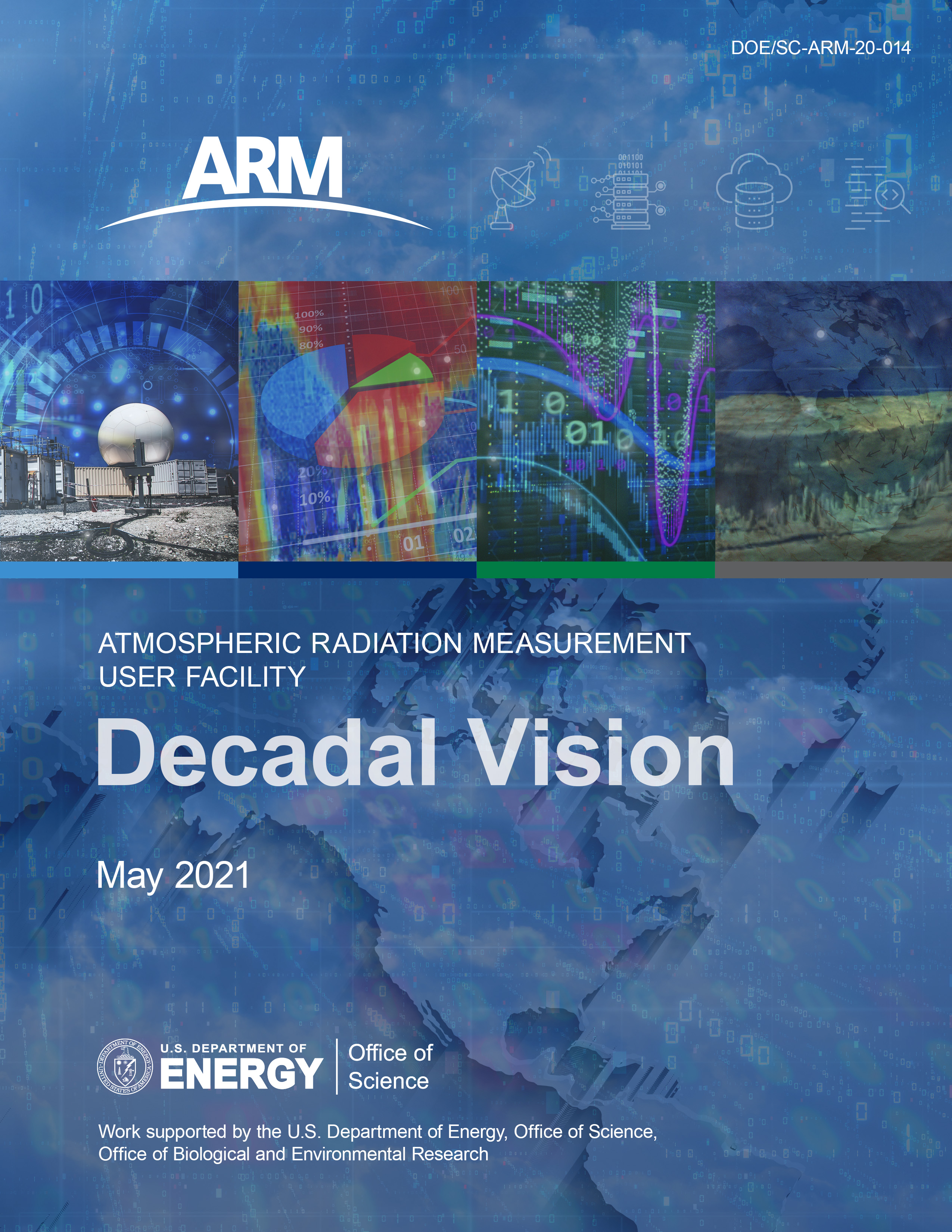Updated Decadal Vision Captures ARM’s Long-Term Priorities
Published: 18 May 2021

A final version of the Atmospheric Radiation Measurement (ARM) user facility’s updated Decadal Vision document is now available. The document lays out how the facility plans to address increasingly complex science challenges related to ARM’s mission over the next five to 10 years.
ARM published its first Decadal Vision document in 2014. Given ARM’s significant progress on the ideas in its first Decadal Vision and the need to capture evolving science challenges and strategic priorities, as well as new technological and operational opportunities, ARM Technical Director Jim Mather led the development of an updated vision document.
To update the vision, ARM solicited feedback from the ARM/Atmospheric System Research (ASR) community and the broader scientific community. Read about how the vision took shape.
The new Decadal Vision also incorporates feedback from ARM’s Triennial Review in November 2020. During this review, which takes place every three years, an external review panel of domain and technical experts selected by the U.S. Department of Energy evaluates ARM’s effectiveness in science, operations, and management.
ARM’s updated vision statement is “to provide the research community with the best array of field observations and supporting state-of-the-art data analytics to significantly improve the representation of challenging atmospheric processes in earth system models.”
The Decadal Vision focuses on activities connected to four themes: measurements, data analytics, data services, and observations to models. In the coming months, ARM will publish a series of articles exploring each of the four themes.
Users can go to ARM’s Future Directions web page to follow progress on activities supporting the vision.
Keep up with the Atmospheric Observer
Updates on ARM news, events, and opportunities delivered to your inbox
ARM User Profile
ARM welcomes users from all institutions and nations. A free ARM user account is needed to access ARM data.


















